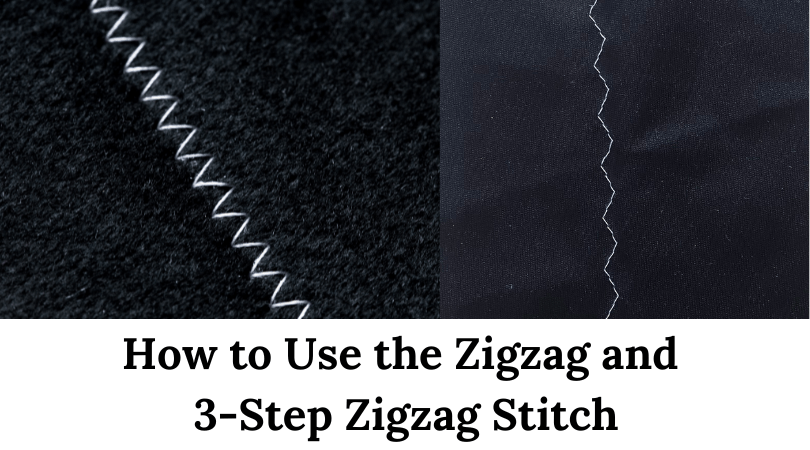Next to the straight stitch, the zigzag stitch is one of the most common stitches used in sewing. It is a versatile stitch that can be used for a variety of purposes, such as finishing seams, sewing elastic applique, and decorative stitching.
When it comes to sewing your own cloth incontinence products, using the zigzag stitch is a must. We’ll take a look at what the zigzag stitch is and how to use it when sewing cloth diapers and reusable underwear.
Nearly ALL sewing machines come with the option for both the zigzag and 3-step zigzag stitch. Plus, the best part about this stitch is that is very easy to use for beginner sewers.
Table of Contents
What is a Zigzag Stitch?
Uses of the Zigzag Stitch
Zigzag Stitch When Sewing Cloth Incontinence Items
How Do I Set My Sewing Machine to Zigzag?
How to Sew a Zigzag Stitch
How to Sew a 3-Step Zigzag Stitch
How to Use a Zigzag Stitch Instead of a Serger
Tips for Using the Zigzag Stitch
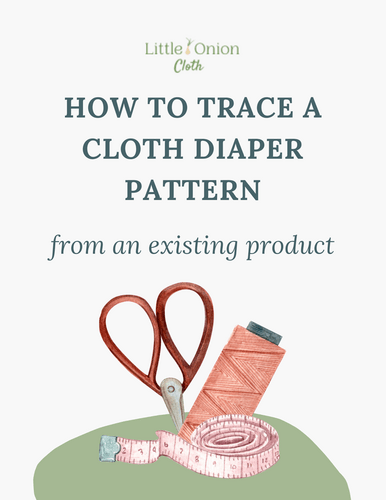
What is a Zigzag Stitch?
A zigzag stitch is a sewing stitch that creates a zigzag pattern by alternating between stitches on the left and right sides. The stitch can be adjusted to create a narrow or wide zigzag pattern, depending on the desired effect. The zigzag pattern created by the threads allows stitches to move and stretch where a straight stitch would break.
There are 2 types of zigzag stitches; the regular zigzag and the 3-step zigzag stitch. The regular zigzag stitch goes one stitch up and one stitch going down while 3-step zigzag has 3 stitches going up and 3 stitches going down. These extra stitches on the 3-step zigzag allows for the stitches to stretch even more than the regular zigzag.
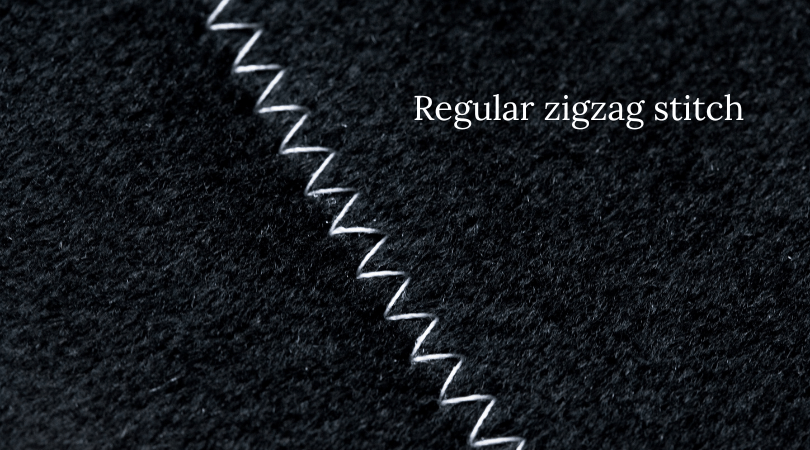
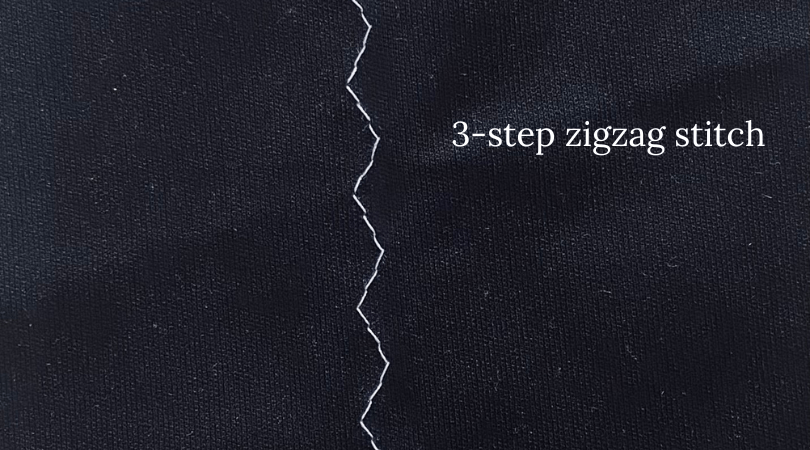
Uses of the Zigzag Stitch
Finishing seams: The zigzag stitch is commonly used to finish raw edges of fabric, which helps prevent fraying and adds durability to the garment. To finish a seam with a zigzag stitch, sew along the raw edge of the fabric with a narrow zigzag stitch.
Attaching Elastics: Since the zigzag allows stitches to stretch without breaking, it works best when attaching elastics to leg openings, waistbands, and other applications where it needs to be stitched down. When attaching fold over elastic (FOE), use a 3-step zigzag stitch since it allows for even more stretch than the regular zigzag.
Applique: Zigzag stitching is also commonly used for applique, which involves sewing one piece of fabric onto another to create a design. The zigzag stitch is ideal for this purpose because it creates a strong, durable bond that can withstand regular wear and tear.
Stretchy fabrics: The zigzag stitch is also a great choice for sewing stretchy fabrics, such as knit fabrics, because it allows the fabric to stretch without breaking the stitching. To sew a stretchy fabric with a zigzag stitch, use a wide zigzag stitch to create a flexible seam.
Decorative stitching: The zigzag stitch can also be used for decorative stitching. By adjusting the stitch width and length, you can create a variety of different patterns and designs, such as waves or chevrons.
Zigzag Stitch When Sewing Cloth Incontinence Items
When sewing cloth incontinence products, you’ll need to use both the standard zigzag and the 3-step zigzag stitch. These stitches are used in the following ways:
1. Finishing edges– when finishing the edges of an insert for either sewn in or free standing applications, finishing the raw edges with a zigzag stitch is a great option if you don’t have a serger. This works best when you have lots of layers of fabric or if the fabric you are using is thick.
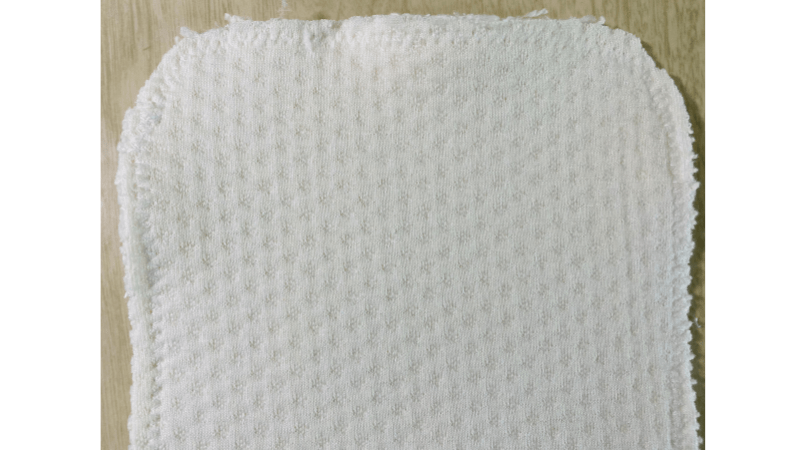
2. Sewing elastic along legs and waist – the legs and waist openings of most cloth incontinence garments require elastic to create a snug fit and prevent leaks. When using knit elastic, sew with a regular zigzag stitch.
When attaching fold over elastic (FOE) on waistbands and leg openings or as trim around a diaper or cover, use the 3-step zigzag.
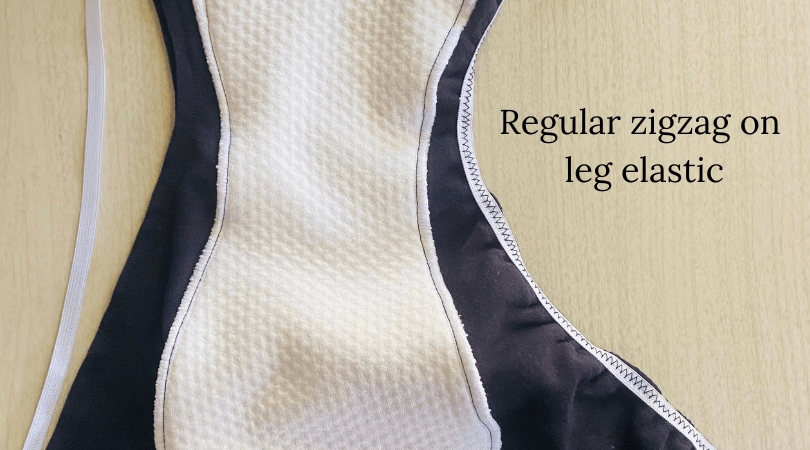
How do I set my sewing machine to zigzag?
Each machine has an option to select a stitch type, whether via turning a wheel or selecting from a screen. To set your sewing machine to zigzag stitch, simply select the option that has the zigzag option.
On my manual machine, I have a stitch guide at the top of my machine that tells me what each stitch looks like. I then turn my stitch selection wheel to the corresponding number. In many cases, the zigzag stitch is the second stitch option.
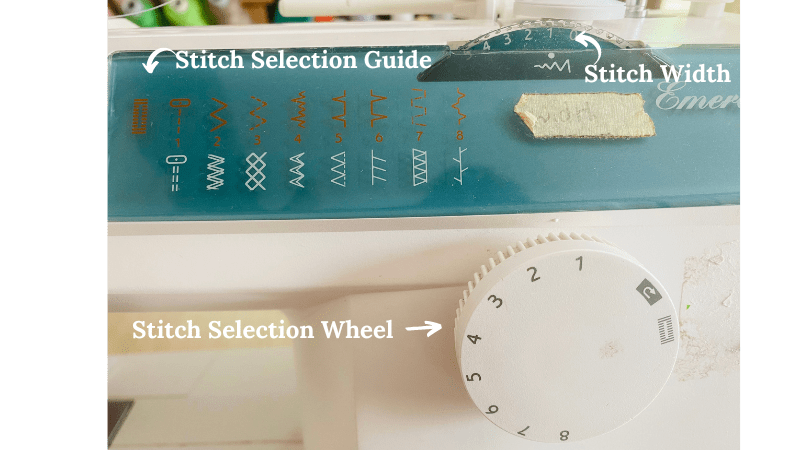
How to Use the Zigzag stitch
To sew a zigzag stitch, you will need a sewing machine with a zigzag stitch setting, as well as fabric and thread. Follow these steps:
1. Set your sewing machine to the zigzag stitch setting. This can usually be done by turning a dial on your sewing machine or selecting a stitch setting on a digital display.
2. Adjust the width and length of your zigzag stitch. The width determines the distance between the zigzag stitches, while the length determines the length of each zigzag. Adjust these settings based on the requirements of your project.
3. Situate fabric beneath the presser foot. If sewing elastic, position it face up. If zigzagging a seam allowance, put fabric right sides together and zigzag along edge of wrong side. If using the zigzag to finish an edge, place fabric right side up. Lower the presser foot.
4. Backstitch before you begin sewing, keeping the fabric moving steadily and guiding it along the desired path. The sewing machine will automatically create the zigzag stitch.
5. When you reach the end of your sewing, backstitch and lift the needle and the presser foot. Cut the thread and remove your fabric from the machine.
How to use the 3-step Zigzag stitch
The 3-step zigzag stitch is most often used to sew down fold over elastics (FOE) or if sewing elastic to a thin fabric like lace. The additional stitches add reinforcement to the zigzag, which is particularly helpful for supporting the tension of the elastic.
Sewing a 3-step zigzag stitch is similar to sewing a regular zigzag stitch.
1. Set your sewing machine to the 3-step zigzag stitch setting. This can usually be done by turning a dial on your sewing machine or selecting a stitch setting on a digital display.
2. Adjust the width and length of your 3-step zigzag stitch. The width determines the distance between the zigzag stitches, while the length determines the length of each zigzag. Adjust these settings based on the requirements of your project.
3. Place your fabric under the needle, with the right side facing up. Lower the presser foot.
4. Begin sewing, keeping the fabric moving steadily and guiding it along the desired path. The 3-step zigzag stitch should be created automatically by the sewing machine.
5. When you reach the end of your sewing, lift the needle and the presser foot. Cut the thread and remove your fabric from the machine.
The 3-step zigzag stitch is great for sewing stretchy fabrics, as it provides a strong and flexible seam. It’s also useful for decorative stitching, as the pattern created by the stitch is more pronounced than a regular zigzag stitch. Remember to practice on scrap fabric before attempting to sew your final project. This will help you to get a feel for the 3-step zigzag stitch and adjust your settings as needed.
How to use a zigzag stitch instead of a serger
If you don’t have a serger, the zigzag stitch works well to finish the raw edges of a project. The end result is not as clean looking it would be serged, but it’s still a great alternative.
For example, you can zigzag stitch together layers of fabric for an insert to help reduce raveling and bulk along the edges of the fabric.
Tips for Using the Zigzag Stitch
Use a ballpoint needle when sewing knit fabrics with a zigzag stitch. This type of needle is designed to prevent the fabric from stretching or puckering. Just note, that most fabrics used in cloth incontinence items are considered knits.
Fabrics like flannel and nylon are woven, so you can use a universal needle for those. Skipped stitches can be an indication that you need to use a different type of needle.
Adjust the stitch width and length to match the width of your elastic as you sew. I’ve also found that a wider – 3 – stitch length works well on FOE and prevents it from puckering as I sew.
Ultimately, using zigzag stitches will make your cloth incontinence items more functional and durable. Plus, it gives you the option of finishing edges on inserts and prefolds if you don’t have a serger. Since this basic stitch is available on nearly all sewing machines, anyone can easily use it when constructing cloth diapers and leakproof underwear.
Alecia
Latest posts by Alecia (see all)
- Best Adult Diaper Covers - March 7, 2024
- Best Fabrics for Making Adult Diaper Covers - February 16, 2024
- How to Use the Zigzag Stitch - May 4, 2023

